Emeralds of the Alhambra takes place in the Alhambra Palace in Granada, Spain, during the Castilian Civil War (1366-1369). The Alhambra is the best-preserved medieval Islamic palace in Europe, if not the world, and is a UNESCO World Heritage site. “Alhambra” refers to the entire walled fortress that clings to the long and narrow red-soiled ridge overlooking Granada (maps can be found on my website: http://johndcressler.com). The red hill itself is the source of the palace’s name (al-hamra is Arabic for ‘red’). Unlike today, in the fourteenth century the towers and walls of the Alhambra would have been white-washed and the hill laid bare for defense, a stunning white on red contrast. The fortress is compact, as dictated by the terrain, about one hundred yards wide and seven hundred yards long, and is nestled within the walled and garrisoned city of Granada, located in extreme southeastern Spain. The Alhambra Palace complex contained the royal palace of the Nasrid Sultan, the complete functioning town that supported it, all of the judicial and administrative services required to run the kingdom, and a separately castled garrison.
Like all Islamic palaces, the Alhambra has a remarkably plain exterior, with no hint of the marvels lurking with, and is divided into several distinct palace complexes. Below are pictures I made while visiting the Alhambra in the fall of 2010 while I was doing research for Emeralds.

The Courtyard of the Myrtles in the Comares Palace, with the Hall of the Ambassadors rising behind it. In medieval times the myrtle hedges would have been inset into the ground to avoid obstructing the view of the pool.
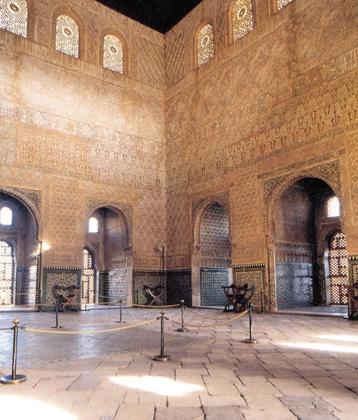
An interior view of the Hall of the Ambassadors, the throne room of the Sultan. Note the elaborate stucco carvings on the walls. The Sultan’s throne would have been at the extreme left.
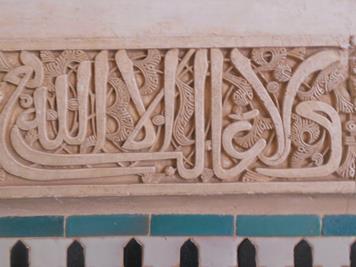
The ubiquitous motto of the Kingdom of Granada, inscribed everywhere within the palace complex. Read right to left, it translates, “There is no victor but Allah.”
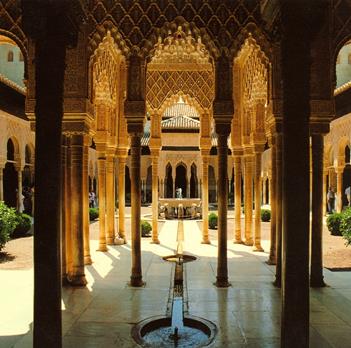
The famous courtyard of the Palace of the Lions, containing 124 columns, and the marvelous lion fountain at its center. All of the fountains within the Alhambra (dozens) were gravity powered.
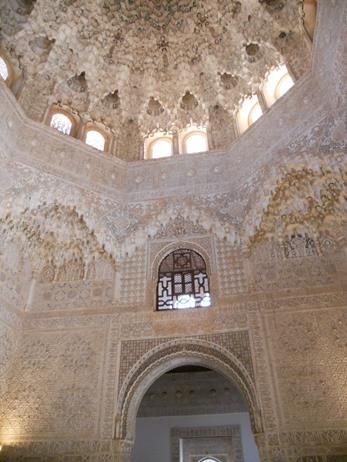
The remarkable prismatic ceiling mocárabes of the Hall of the Two Sisters within the Palace of the Lions.
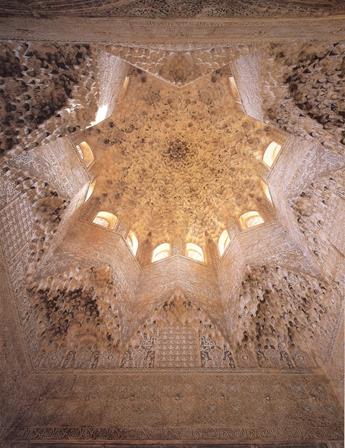
The prismatic ceiling mocárabes of the Hall of the Abencerrages within the Palace of the Lions.